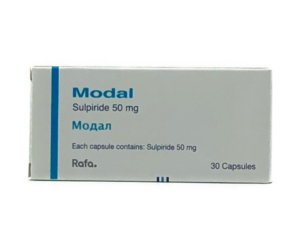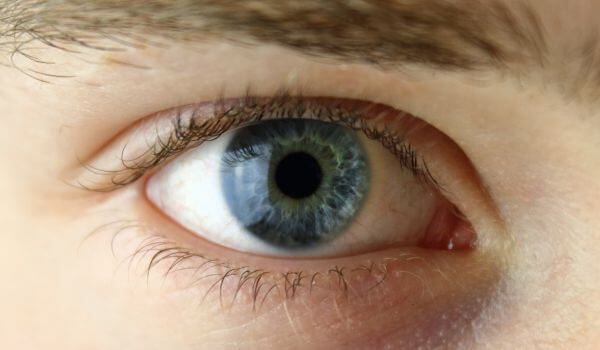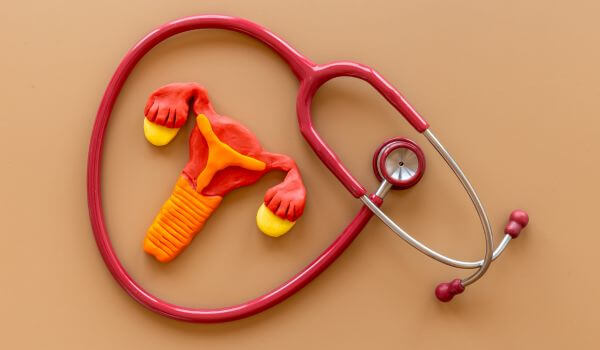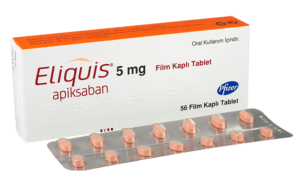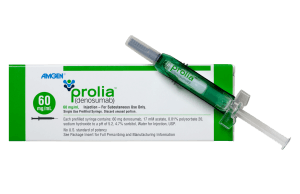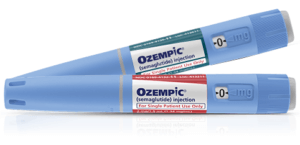 For a few months, I had been experiencing occasional bouts of dizziness, most often first thing in the morning when I woke up and climbed out of bed. It was never something that especially bothered me – certainly not enough to warrant a visit to the doctor. But then it took a more dramatic turn when, one time during the day, I had to jump up out of a low chair to answer a knock on my front door and found myself reeling with a sense of the whole room spinning around me. Fortunately, I was able to grab a nearby table, which stopped me from falling. Since then, I have become more aware of this feeling, and I even noticed that I get a similar feeling of spinning when I close my eyes and change the position of my head. This led me to consult with a neurologist, who, after a battery of tests for other possible causes, referred me to a specialist in balance to investigate whether this could be a case of vertigo or one of the associated conditions that can cause similar symptoms.
For a few months, I had been experiencing occasional bouts of dizziness, most often first thing in the morning when I woke up and climbed out of bed. It was never something that especially bothered me – certainly not enough to warrant a visit to the doctor. But then it took a more dramatic turn when, one time during the day, I had to jump up out of a low chair to answer a knock on my front door and found myself reeling with a sense of the whole room spinning around me. Fortunately, I was able to grab a nearby table, which stopped me from falling. Since then, I have become more aware of this feeling, and I even noticed that I get a similar feeling of spinning when I close my eyes and change the position of my head. This led me to consult with a neurologist, who, after a battery of tests for other possible causes, referred me to a specialist in balance to investigate whether this could be a case of vertigo or one of the associated conditions that can cause similar symptoms.
I can share some of the things I have learned about vertigo over the course of the investigation and treatment that I have undergone. I will emphasize up front that there are many possible causes of my experience, and it’s very important to get a full examination by a qualified and specialist healthcare provider before rushing into any treatment. I’m making it my business to learn as much as I can about the condition to be able to make informed decisions and share what I’ve learned with you so you can do the same.
Understanding Vertigo
Vertigo is characterized by dizziness and a spinning sensation that can disrupt even simple activities. While occasional dizziness is not unusual, persistent or severe vertigo may indicate an underlying issue that requires medical attention. This article explores the causes, symptoms, and treatment options for vertigo, with a special focus on the potential treatment options.
It’s important to distinguish between dizziness and vertigo because dizziness is a common condition that can be mistaken for vertigo. Dizziness can feel like lightheadedness, unsteadiness, or weakness. Vertigo is a type of dizziness that feels like you or the world around you is spinning.
Causes of Vertigo
Vertigo results from issues affecting the inner ear, brain, or sensory nerve pathways. The most common causes include:
Benign paroxysmal positional Vertigo (BPPV)
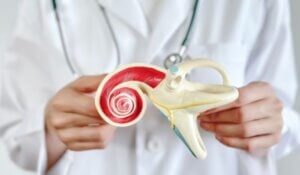
The definitive diagnosis for BPPV comes from the Dix-Hallpike test. During the test, the subject sits on the edge of an examination table with legs extended and their head turned to one side. The examiner then quickly lowers the patient flat on the table. If there is a feeling of spinning or the examiner sees jerking eye movements (nystagmus), that is a sign associated with BPPV coming from the ear on the side that the head was turned to. The procedure is then repeated with the head turned 90 degrees to the other side. Usually, BPPV is asymmetric, meaning it comes only from one ear, but it is possible that both ears can be causing the problem.
People over age 60 are more likely to get BPPV (guilty as charged!)
Ménière’s Disease
Ménière’s Disease is a chronic condition involving fluid buildup in the inner ear, causing vertigo episodes that can last for hours, often accompanied by tinnitus (ringing in the ears), hearing loss, and a sense of stuffiness inside the ears.
There is no definitive test for Ménière’s Disease, and doctors will usually rule out all other possible causes of the symptoms in order to reach that diagnosis.
Vestibular neuritis and Labyrinthitis
These conditions result from viral infections affecting the vestibular nerve or inner ear. Symptoms include intense vertigo, nausea, and balance issues. There is no single test that definitively diagnoses vestibular neuritis or labyrinthitis, so the diagnosis is often made based on a combination of symptoms after other likely causes have been investigated.
Migraine-associated vertigo
Migraine sufferers sometimes experience vertigo as part of their symptoms, even without an accompanying headache. It may be triggered by light, sound, or certain foods.
Head or neck trauma
Injuries to the head or neck can damage the vestibular (inner ear) channels, leading to vertigo that may persist long after the initial injury has been repaired.
Post-operative complications
Rarely, vertigo can arise following surgery around the ear which may disrupt the stability of the vestibular canals.
Medications and pre-existing medical conditions
Certain medications, called ototoxic drugs, such as antibiotics, pain relievers, and chemotherapy drugs, can damage inner ear function. Conditions like multiple sclerosis or stroke can also cause vertigo.
Symptoms of vertigo
Vertigo symptoms can vary in severity and duration but commonly include:
- A sensation of the environment around a person spinning or tilting
- Dizziness and lightheadedness
- Nausea and vomiting
- Balance difficulties
- Blurred vision or difficulty focusing
- Ear pressure or ringing in the ears (in cases like Ménière’s disease)
Treatment options for vertigo
There are two main streams of treatment for vertigo, which are selected depending on the underlying cause. These common approaches include positional movements, and medication.
Positional movements
Canalith repositioning maneuvers
More commonly referred to as the Epley Maneuver, it’s the preferred method for treating BPPV. It consists of a series of specific head movements to help reposition the dislodged inner ear crystals, alleviating symptoms in most patients with BPPV.
The procedure described here is for treating BPPV in either ear.
- Start by sitting on a bed with a pillow positioned where it will support the shoulders when lying back flat on the bed in a way that the head will dangle over the edge of the bed without any support.
- Turn the head 45 degrees to the side of the ear that is affected by BPPV.
- Quickly lie back, keeping the head turned. Shoulders should now be on the pillow, and the head should be reclined below the shoulders.
- Wait in this position for 30 seconds.
- Turn the head 90 degrees to the opposite side without raising it to look 45 degrees to the unaffected side.
- Wait another 30 seconds.
- Holding the head in the same position, turn the whole body 90 degrees to the unaffected side so that the face is pointing to the floor.
- Wait another 30 seconds.
- Sit up without rotating the head.
Usually, the Epley Maneuver is performed by a trained therapist, and one session is enough to reposition the floating crystals. Doctors can advise patients to repeat the maneuver at home if there are persistent symptoms.
Brandt-Daroff Exercise
This is a simpler maneuver that can be done repeatedly at home as long as symptoms persist.
The patient starts upright, seated on the edge of a bed, and turns their head 45 degrees away from the affected ear. Then, the person lies down with their head facing straight up and the body tilted so that the rotation is maintained. They then stay in this position for at least 30 seconds or until the vertigo eases off (whichever is longer,) and then sit back up. The procedure is then repeated with the head positioned towards the other ear.
Vestibular Rehabilitation Therapy (VRT)
VRT involves exercises that help the brain compensate for vestibular imbalances, improving balance and reducing dizziness. It does not treat the cause of the vertigo, but allows people to accommodate and handle the symptoms more effectively.
Medications for symptom relief
There are some medications that can help manage some of the results of vertigo, without having any effect on the frequency or length of attacks. These include:
- Antihistamines to reduce dizziness and nausea. Some of these drugs are over-the-counter medicines like Benadryl, which can have a calming effect on the brain, and so reduce the signals coming from the ear. However, they are also strong sedatives and have unwanted side effects.
- Benzodiazepines are controlled substances prescribed to treat anxiety, and they affect brain activity, which can suppress vestibular activity. They also have strong unwanted side effects and should only be taken under supervision.
- In cases where vertigo is causing bouts of extreme nausea or vomiting, antiemetics can suppress the symptoms by blocking neurotransmitters in the brain and gastrointestinal tract that trigger these symptoms.
Medications to treat vertigo 
Modal (generic name: sulpiride) is an atypical antipsychotic medication of the benzamide class that can be prescribed in its low-dose form (50 mg) for vertigo. In higher doses, sulpiride is more commonly prescribed thanks to its mild sedating and antipsychotic activity to treat schizophrenia, major depressive disorder, and anxiety.
Sulpiride is not approved by the FDA for any purpose, but it is approved in many other advanced countries, including the UK, the European Union, Japan and Israel. Doctors can prescribe sulpiride off-label if they are satisfied that it is the right treatment for a patient.
How Modal works
Modal for vertigo works by modulating neurotransmitter activity in the brain, which helps stabilize sensory input and reduce dizziness.
Modal acts on dopamine and serotonin receptors in the brain, regulating neural pathways involved in balance and spatial orientation. By improving central nervous system stability, Modal effectiveness extends beyond standard treatments, providing relief where other medications fail.
A typical treatment plan with Modal
Patients prescribed Modal for vertigo typically start with a low dose, gradually increasing based on response. The usual dosage varies, but healthcare providers assess factors like severity, frequency of episodes, and underlying conditions.
Safety and side effects of Modal
While Modal effectiveness in treating vertigo is promising, patients should be aware of potential side effects, including:
- Drowsiness or fatigue
- Dry mouth
- Mild gastrointestinal discomfort
- Rarely, changes in blood pressure or mood disturbances
Patients should follow their prescribed dosage strictly and consult their healthcare provider if side effects become concerning.
Other approaches for reducing the frequency and severity of vertigo are:
- Reducing sodium intake
- Staying hydrated
- Avoiding caffeine, alcohol, and nicotine
- Managing stress and improving sleep quality
For severe cases, surgical procedures like vestibular nerve sectioning or labyrinthectomy may be considered if other treatments fail.
Frequently Asked Questions About Vertigo
What triggers vertigo episodes?
Vertigo episodes can be triggered by sudden head movements, dehydration, stress, ear infections, or underlying conditions like Ménière’s disease. Certain medications, excessive caffeine intake, and even lack of sleep can also contribute. Identifying personal triggers can help manage and reduce vertigo episodes. Keeping a symptom journal can assist in recognizing patterns and avoiding potential triggers.
Can vertigo be cured permanently?
The possibility of a permanent cure depends on the underlying cause. BPPV can often be completely resolved with maneuvers like the Epley maneuver, whereas chronic conditions like Ménière’s disease may require ongoing management. Vestibular rehabilitation therapy and lifestyle changes can significantly reduce symptoms, even if a complete cure isn’t possible.
How does Modal help with vertigo?
Modal for vertigo works by stabilizing the brain’s neurotransmitters, improving balance and reducing dizziness. It acts on dopamine and serotonin pathways to minimize sensory misalignment, which is often responsible for vertigo symptoms. Many patients find relief with Modal, especially when other treatments have not provided sufficient improvement.
What are the best natural remedies for vertigo? 
Natural remedies include vestibular exercises, staying hydrated, and consuming a low-sodium diet. Ginger tea may help reduce nausea associated with vertigo, and acupuncture has shown some promise. Stress reduction techniques, such as meditation and breathing exercises, can also prevent episodes caused by anxiety or tension.
When should a person see a doctor for vertigo?
Medical attention becomes necessary if bouts of vertigo are frequent, becoming more severe, or accompanied by additional symptoms like vision changes, hearing loss, difficulty speaking, or weakness in the limbs. These may indicate a more serious condition, such as a stroke or neurological disorder. If home remedies and basic treatments don’t help, a medical evaluation is essential to determine the best course of action.
Whether through lifestyle changes, physical therapy, or medications like Modal for vertigo, there are various options available for relief. If you experience persistent or worsening vertigo, consult a healthcare professional to explore the best treatment plan for your specific condition.


